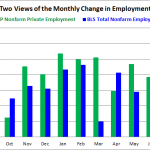While we are huge proponents of leveraging low cost and liquid ETFs for virtually every asset class; ETFs that invest in closed-end funds (CEFS) are a different story altogether. The two funds that have garnered the most investor attention in this space are the PowerShares Closed End Fund Composite ETF (PCEF) and the Yieldshares High Income ETF (YYY). Both contain a seemingly diverse array of underlying asset classes, sectors, and strategies.
While both fund’s actual management expense ratio of 0.50% sounds reasonable, the issue is that you’re also paying for active management and leverage borrowing costs on an individual fund level. While that isn’t an immediate red flag, the largest issue I see with ETFs that purely invest in CEFs is that the index construction methodology doesn’t take into account the fundamental propensities of the underlying holdings.
For example, these funds may have overlapping strategies spread across multiple managers, which also have varying fundamental views on portfolio strategy. Envision it this way, one manager may love a specific sector of the fixed-income market, such as emerging market bonds, another manager avoids them like the plague. So while one manager may be proven right, the other is wrong, and whatever benefit you would have received is sorely cancelled out.What’s worse is that you continue to pay both managers a fee regardless.
When you sum up all the instances where that scenario happens in each individual CEF, all of the exotic portfolio management themes and talent is quickly stripped away. Meaning, your returns are doomed to plod along with the index and ultimately the mean average of the entire asset class.It’s a classic case of over-diversification.
Oddly enough, that fact alone is the primary marketing tactic to attract investors to these funds; you remove individual fund risk. However, if an investor simply wants index returns from a complicated asset class they may not fully understand, CEFs are the last place I would suggest they invest in. There are multiple layers of complex derivatives, hedging, and active management strategies in play.On top of individual fund corporate actions, premium and discount analysis, and earnings reports.Lastly, probably the most dangerous element to CEF investing flies under the radar: leverage.












Leave A Comment